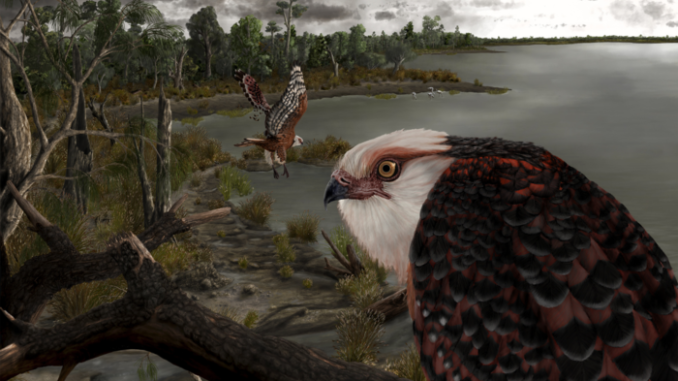
Paleontologists in South Australia found 63 fossilized bones of an eagle that lived in the forests 25 million years ago and preyed on koalas.
The discovery of what has been dubbed Archaehierax sylvestris (“ancient hawk of the forest”) was made on the shores of a dry lake about 250 miles north of Adelaide.
“This species was slightly smaller and leaner than the wedge-tailed eagle, but it’s the largest eagle known from this time period in Australia,” said Ellen Mather, a doctoral candidate at Flinders University and principal author of an article on the findings published in Historical Biology.

The flying raptor lived during the late Oligocene period (33 million to 23 million years ago) and is one of the oldest known eagle-like raptors. “The foot span was nearly 15 cm [5 inches] long, which would have allowed it to grasp large prey,” Mather said. The largest marsupial predators of that time were dog- or cat-sized, “so Archaehierax was certainly ruling the roost,” she added.
Study co-author Trevor Worthy said that “with eagles at the top of the food chain, they are always few in number and so are infrequently preserved as fossils.” Finding even a single bone is rare, he said, and finding a nearly complete skeleton is “pretty exciting, especially considering how old it is.”
Koalas, possums and other animals living in trees around a vast and shallow lake would have been the eagle’s pickings. On the lake, waterfowl such as cormorants and flamingoes were likely abundant.
“The fossil bones reveal that the wings of Archaehierax were short for its size, much like species of forest-dwelling eagles today. Its legs, in contrast, were relatively long and would have given it considerable reach,” said Mather.

For the researchers, this raised the question of how the ancient eagle could have dodged trees and branches while seeking prey.
“The combination of these traits suggest Archaehierax was an agile but not particularly fast flier and was most likely an ambush hunter,” Mather said. “It was one of the top terrestrial predators of the late Oligocene, swooping upon birds and mammals that lived at the time.”
“The completeness of the Archaehierax skeleton allowed us to determine where it fits on the eagle family tree,” Worthy added.
Mather said that it had features unlike any found in modern eagles and hawks. “It seems to have been its own unique branch of the eagle family,” she said. “It’s unlikely to be a direct ancestor to any species alive today.”
Edited by Richard Pretorius and Kristen Butler
The post Agile Ancient Eagle Ruled The Roost 25 Million Years Ago appeared first on Zenger News.
